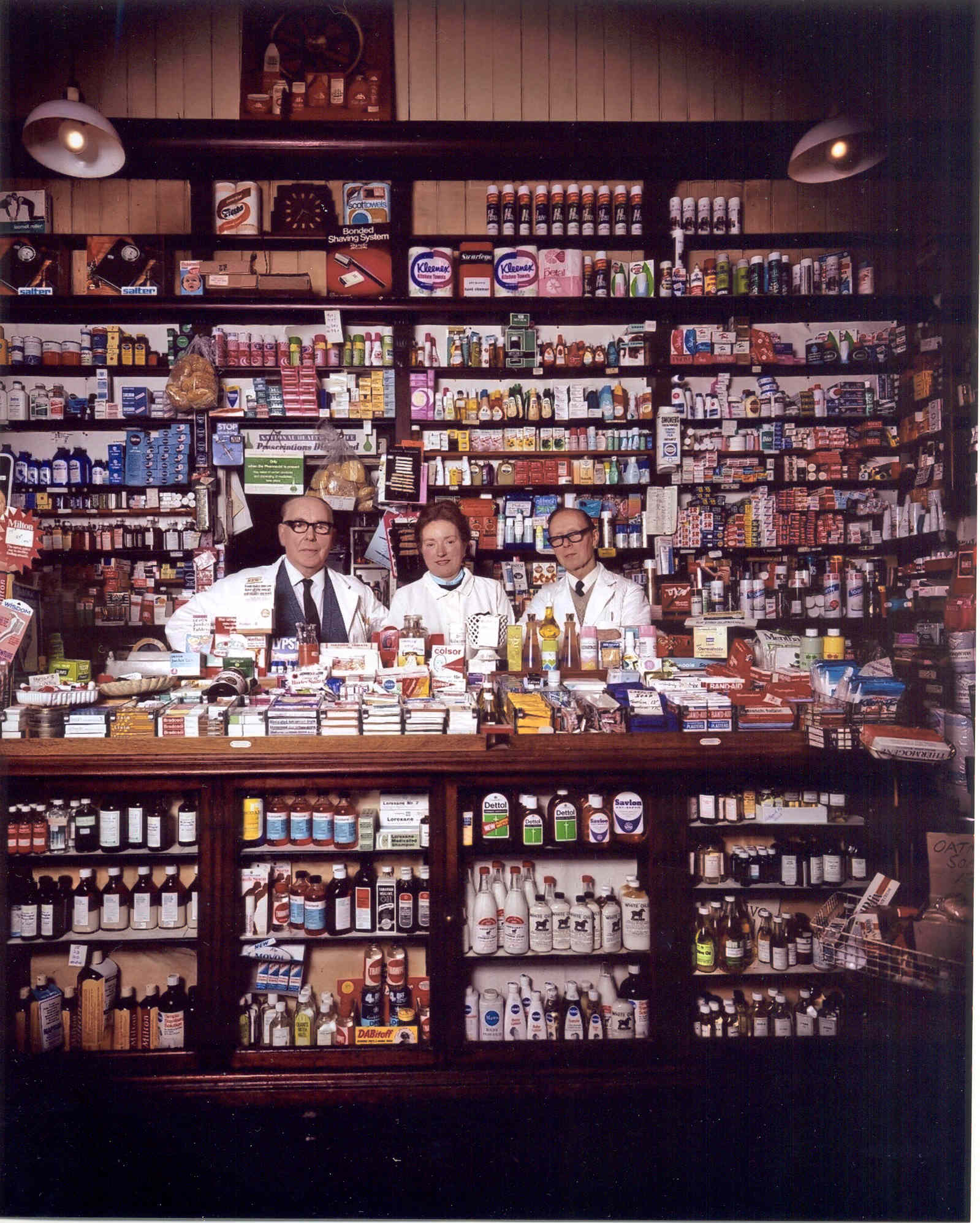
J.R. Manson (Chemists) Limited
101 Leather Lane, London, EC1, 1972
Interior view of J.R. Manson (Chemists) Limited, 101 Leather Lane, London, EC1, taken in 1972.
The photograph shows the dispensing chemist, John Ross Manson, standing behind the shop counter on the left hand-side of the photograph, with his two long-serving assistants Marina Folly and George Cook.
A pharmacy was first established at the address in 1898, and many of the shop fittings date from that period.
Colour photographic print by John Londei.